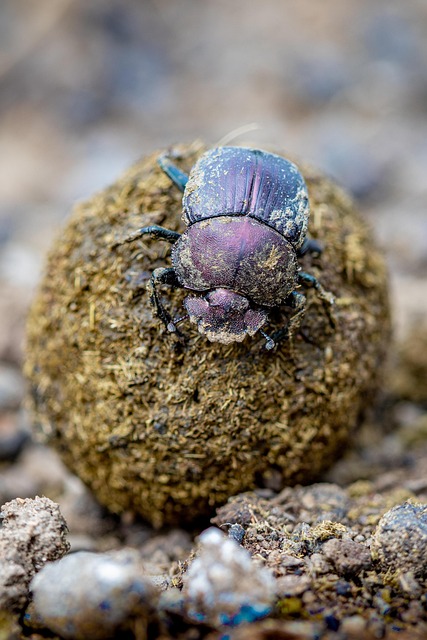Carpet beetles, attracted to natural fibers, dark areas, and specific odor sources, can cause significant damage in homes and businesses. Effective commercial carpet beetle removal requires understanding their behavior and implementing prevention strategies like thorough cleaning, sealing entry points, and removing food sources. Professional intervention involves tailored methods including species identification, targeted treatments, heat treatment, and regular cleaning. Post-removal care includes deep vacuuming, specialized solutions, addressing initial causes, and monitoring to prevent future infestations.
Carpet beetles can cause significant damage to your home or business, feasting on fabrics and textiles. Understanding their behavior and common attractants is the first step in effective prevention and removal. This guide offers expert advice on navigating the world of commercial carpet beetle removal, from preparing for treatment to post-removal care. Learn about proven methods that go beyond simple cleaning, ensuring a thorough elimination and preventing future infestations.
Understanding Carpet Beetles: Their Behavior and Common Attractants
Carpet beetles, a common pest in homes and businesses, are attracted to various substances, leading to their proliferation in textile-rich environments. Understanding their behavior is crucial for effective commercial carpet beetle removal. These insects feed on natural fibers, such as wool, silk, and plant matter, making carpets, upholstery, and clothing potential food sources. They are also drawn to dark, secluded areas where they can lay eggs undisturbed.
Their attraction doesn’t end there; carpet beetles are enticed by the scent of perspiring animals, including humans, which is why items stored in attics or basements may be particularly vulnerable. Additionally, certain substances like pet urine and dead insects can serve as powerful attractants. Recognizing these common attractants is essential for implementing prevention strategies to deter carpet beetles before they cause significant damage.
Preparation: Steps to Take Before Commercial Carpet Beetle Removal
Before engaging in commercial carpet beetle removal, preparation is key. The first step involves thorough cleaning and sanitizing of the affected area. Vacuuming with a high-efficiency particulate air (HEPA) filter is essential to eliminate adult beetles and larvae hiding within the fibers. Additionally, steam cleaning can help kill any remaining eggs and embryos. It’s crucial to identify and address potential entry points, such as cracks or gaps around doors and windows, where beetles might have entered. Sealing these areas with appropriate sealants can prevent future infestations.
Another important preparation step is to remove any sources of food for the beetles. This includes storing clothing, textiles, and other susceptible items in airtight containers, especially if they’ve been stored for an extended period. Cleaning or replacing affected carpeting is often necessary, as infested carpets can be challenging to treat effectively. Professional cleaners should also assess the overall condition of the flooring, as damaged or aged carpets are more vulnerable to beetle damage. Lastly, ensuring proper ventilation in the space can help reduce moisture levels, which beetles find favorable for breeding and survival.
Effective Methods for Commercial Carpet Beetle Removal
When it comes to addressing a commercial carpet beetle infestation, professional intervention is key. Experienced pest control experts employ a range of effective methods tailored to commercial settings. These include thorough inspection and identification of the specific beetle species, as different beetles require distinct approaches for removal. Once identified, professionals use targeted treatments such as insect growth regulators (IGRs) or safe, eco-friendly pesticides to disrupt the beetles’ life cycle.
In addition to chemical interventions, experts emphasize preventive measures like regular cleaning and maintenance. This involves deep vacuuming to remove lint and debris, followed by professional steam cleaning to eliminate any remaining eggs or larvae. The use of specialized equipment like heat treatment can also be employed to kill hidden beetles and prevent re-infestation. These comprehensive strategies ensure not only the effective removal of carpet beetles but also maintain a clean and safe environment for commercial spaces.
Post-Removal Care: Preventing Future Infestations
After successfully removing a carpet beetle infestation through professional commercial carpet beetle removal services, proper post-removal care is essential to prevent future invasions. The first step is thorough cleaning and sanitizing of the affected areas. This involves deep vacuuming with a HEPA filter to extract any remaining larvae or eggs, followed by a specialized cleaning solution to eliminate odors and any residual beetle parts.
To further safeguard against future infestations, it’s crucial to address the underlying causes that attracted the beetles in the first place. This might include improving ventilation, fixing moisture issues, and ensuring proper storage of organic materials like textiles or natural fibers. Regular monitoring using pheromone traps can also help detect any early signs of a reoccurring infestation, allowing for swift action before it becomes established again.
In conclusion, effectively managing and preventing carpet beetle infestations requires a multi-step approach. By understanding their behavior, preparing your space, employing professional removal methods, and maintaining post-removal care, you can significantly reduce attractants and safeguard your carpets. Remember, prompt action is key to minimizing damage and ensuring a pest-free environment, especially when it comes to commercial carpet beetle removal.
